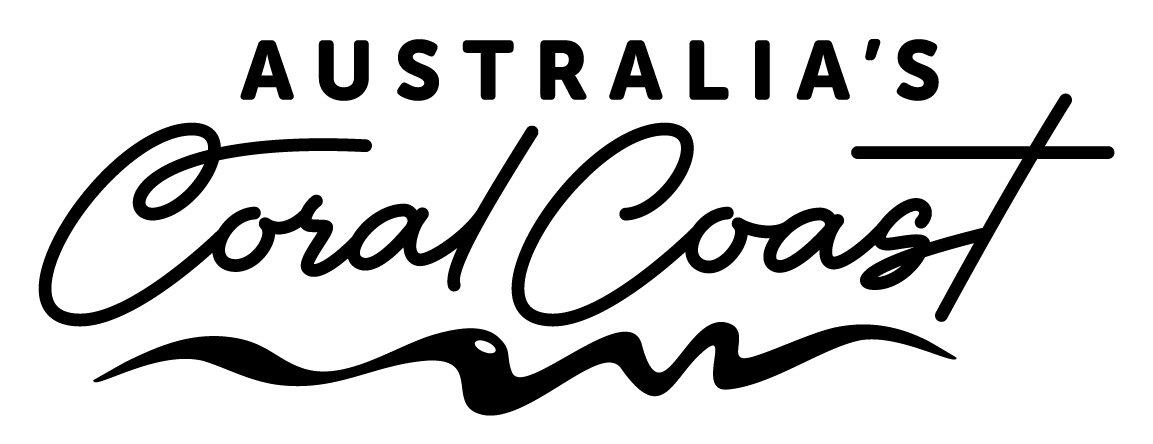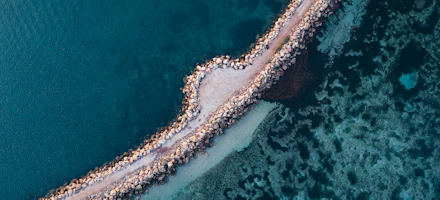
Wildflowers
Witness an abundance of colour dot the terrain as wildflowers burst into bloom during Wildflower Season
Throughout late winder and spring, you'll have front row seats to some of best displays of wildflowers in the world.
If you're seeking a wildflower adventure, you've come to the right place - Australia's Coral Coast is home to thousands of species of wildflowers, 50% of which cannot be found anywhere else on earth. Between late July and early October, you’ll see some of Western Australia's most stunning displays as blankets of brilliant wildflowers colour the outback landscape and unique individual species can be found throughout Wildflower Country. Biodiversity hotspot Coalseam Conservation Park is renowned for its colourful carpets of pink, gold, cream and white everlasting flowers that burst into bloom each season and cover the park's dramatic terrain of rugged cliffs, rocky outcrops and red soil. Places such as Lesueur National Park, Cape Range National Park and the Shark Bay World Heritage Area have wildflowers blooming all year.
Start planning your next adventure with the below resources:
1. See what's currently blooming in the region
2. Get inspired with our suggested Wildflower Self-Drive Itineraries
3. Learn more about Wildflower Country and its towns and wildflower hotspots
4. Download or request a hard copy of our free Holiday Planner for more information on things to see and do in the Coral Coast
5. Sign up to our email newsletter to get the latest wildflower updates delivered straight to your inbox
6. Talk to the local Visitor Centres. They are one of the best resources to help you plan your wildflower adventure, being able to provide the most up-to-date information on sightings and locations.
Wildflower Hotspots

Nambung National Park
Located just over 2 hours' drive north of Perth, Nambung National Park is renowned the towering limestone structures of the otherworldly Pinnacles Desert, its beautiful beaches at Kangaroo Point and Hangover Bay, coastal and inland dune systems, and low heathland rich with flowering plants. Cover 17,000 hectares of coastal heathland, Nambung National Park is home to a variety of native plants and wildlife. Wildflowers commonly found during late winter and throughout spring include wattles, quandong, yellowtail flower, thick-leaved fan flower, white clemantis, cockies tongues, parrot bush and banksia.

Lesueur National Park
Lesueur National Park, approximately 2 hours, 45 minutes' drive north of Perth, is located inland between Jurien Bay and Green Head. Covering 26,987 hectares, the National Park is one of the most diverse and rich floral areas in the world. This biodiversity hotspot is home to approximately 10% of Western Australia's known flora; some 111 species are endemic to the region, of which 10 are rare and 9 are only found in Lesueur National Park.
The 18.5km Lesueur Scenic Drive takes you through one of the most scenic pars of the National Park, past Mount Lesueur and Cockleshell Gully, with opportunities to pull over into dedicated bays and follow marked walk trails into the bush. Three walk trails in particular are recommended for wildflower viewing: the 2.5km loop Gairdner Walk Trail, near the Drummond Recreation Area; the 4km loop Lesueur Walk Trail, also near the Drummond Recreation Area, which takes you to the top of Mount Lesueur; and the 7.1km loop Yued Ponar Walk Trail at the Cockleshell Gully picnic area. All three trails are Grade 3 and suitable for most ages and levels of fitness. The trails comprise some steep sections and rough surfaces.
Lesueur National Park is suitble for two-wheel drives and campervans. Roads are mostly sealed, with one compacted gravel road. Facilities include picnic sites, bush toilets and interpretive signage providing insight into the National Park's features and plants. National Park Entry Fees apply.

Coalseam Conservation Park
Located between Mingenew and Mullewa, approximately 4 hours, 30 minutes' drive north of Perth, Coalseam Conservation Park is one of Western Australia's top wildflower hotspots. Many varieties of wildflowers are found in abundance here, but Coalseam is most notably renowned for its colourful carpets of everlasting flowers which transform the usually sparse understory of wattle scrub during wildflower season.
In addition to everlastings, banksias, hakeas and grevilleas add to your explosion of colour. Keep your camera handy and your eyes peeled for native wildlife that live in the Park, including kangaroos, emus, echidnas, eagles and cockatoos. Coalseam Conservation Park is truly a nature-lovers paradise, and is a peaceful location for a picnic on the banks of the river beneath the gum trees. Camping is available at two designated camp sites: Breakaway and Miners. However, it is important to note that drinking water is not available in the Park so campers should come prepared with their own water supply. Toilet facilities are available. For more information and to book a campsite, visit Parks + Wildlife's Camp Site Availability Checker.

Depot Hill
Depot Hill is located 12km or an easy 5 minutes' drive northeast of Mingenew, approximately 4 hours' drive north of Perth, where you'll find an abundance of wildflowers and native animals. From late winter and throughout spring, you'll be surrounded by a sea of pink everlastings as you walk around Depot Hill, before the terrain changes to a mix of flowering shrubs and a mass of orchids, in particular, snail, donkey, spider, cowslip and purple tassel orchids. Nearby, Mingenew Hill is a short stroll from Mingenew's town centre and offers stunning views across the town's breakaway country. From all vantage points, it's like looking over a quilt of beautiful yellows and greens with the hill itself abundant with a swathe of wildflower species. Mingenew Hill is the perfect spot for a picnic lunch or champagne sunset to finish a lovely day exploring the wildflowers.

Pindar and the rare Wreath Flower
Inland from Geraldton, the towns of Pindar and Mullewa are renowned for stunning wildflowers, including the rare Wreath Leschenaultia flower that blooms along the road and in park lands between August and October.
Exquisite rings laid neatly over the gravelled surface of the roadside, each made up of dozens of flowers with frilled petals of red, white and pink. These flowers only grow where the soil has been disturbed, such as gravel roads.
Please park thoughtfully and exercise caution on this road as trucks do use the road. Ask for sightings and wildflower maps during the season at a local Visitor Centre.

Kalbarri National Park
From July until November, over 1,000 species of native flora progressively burst into bloom around Kalbarri and within the Kalbarri National Park. Many of these are endemic to the region, including the Kalbarri Spider Orchid.
Bush flowers such as Banksias, Hakea, Pink Pokers and Flannel Bush and orchids such as Pink Fairies and Snail orchids as well as native flowers like Grevillea, Wattle, Murchison Rose and Thryptomene can be found. Look out for wildflowers on the coastal cliff tops and in the gorge country and ask for sightings at the local Visitor Centre.
Excellent viewing locations at inland sites include Ross Graham and Hawks Head, along the road and carpark, Nature’s Window and The Loop, and Z-Bend lookout. The Loop Trail is a Grade 4, 8km walk and provides stunning views of the Murchison River gorge. National Park entry fees apply to inland sites.
Coastal site viewing locations include Rainbow Valley and Mushroom Rock, with orchids often found at Natural Bridge and Red Bluff sites. The Rainbow Valley Trail links Mushroom Rock with the Rainbow Valley car park, and is a Grade 4, 3km return loop along clifftops above the ocean. Coastal sites are free to visit.

Shark Bay World Heritage Area
Shark Bay has the longest wildflower season in Western Australia with over 700 species of flowering plants from May to October. Of these, more than 150 species are of special scientific interest - several are exclusive to the area. Species include Shark Bay Daisies, Tamala Rose, Dune Wattle, Kurara and Wurmbea Odorata, and Everlasting paper daisies.
The aromatic Tamala rose is one of the region’s most well-known and showy species. The Shark Bay daisy, Royce’s Gum, Rogerson’s grevillea and golden lamb’s tail are also confined to the Shark Bay region. The sceptre banksia features large flower-spikes in summer and, after good winter rains, everlastings often grow in massive drifts of colour.

Ningaloo Coast World Heritage Area
The Ningaloo Coast runs from Carnarvon in the south to Exmouth in the north, and these areas see the first of the wildflowers in bloom, usually from late May onwards.
Cape Range National Park is home to 630 species of flowering plants - the Quobba coastline out of Carnarvon has some very unusual looking flowers. The brilliant Red Sturt Desert Pea, which flowers in late winter (June to August) is a particularly popular flora species in the Cape Range along with the purple Mulla Mulla flower. The brilliant Red Sturt Desert Pea and the even rarer White Sturt Desert Pea populate the area. The Green Bird Flower, shaped just like a hummingbird, is found within the Cape Range National Park and in Carnarvon town. National Park entry fees apply.
Each year, the town of Carnarvon and its surrounds are flooded with everlasting flowers, just like those found at Coalseam Conservation Park near Mingenew. Carnarvon's everlastings can be found in patches and fields along the North West Coastal Highway and sometimes at Rocky Pool. Carnarvon's everlastings generally start in late July going into September - with everlasting carpets intertwining with purple Dampier Pea, thriving in the red Pindan dirt – very colourful!
Wildflower Viewing & Photography Tips:
1. Take nothing but photos! The picking of wildflowers is illegal and can attract a $2,000AUD fine. Remember: look, but don't touch.
2. Stick to the paths. Please watch where you walk and follow defined paths wherever possible. If you do venture off track, be careful where you place your feet to avoid trampling and damaging our precious wildflowers.
3. Stick to public property. It may be tempting to enter private fields, but please remember that this is trespassing. In particular, canola crops create stunning fields of yellow but it's important for tourists to stick to public areas to avoid causing damage.
4. Any camera will do! You can capture great wildflower photos no matter what type of camera you're using - a mobile phone, small digital camera or professional camera. Breeze, angle and lighting are the most important factors when photographing wildflowers.
5. Plan and book ahead. The region is busy during wildflower season, so make sure you plan and book your accommodation ahead of time. There are several campsites in Wildflower Country, and whilst bookings aren't available for many of them, they are popular and do tend to fill up. Arrive early, especially if travelling on a weekend. Small nightly fees are payable for Wildflower Country campgrounds, usually directly to the Ranger on site. For more information, refer to Parks & Wildlife's campsite checker.
6. Be road safe. If you are stopping on a roadside to view wildflowers, please use dedicated pull-off areas and stopping bays wherever possible, or ensure to safely pull over and park well off the road.






































